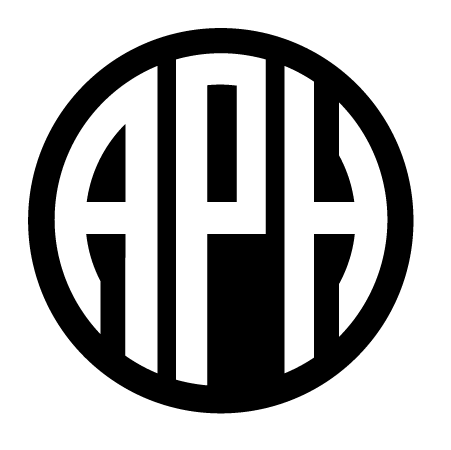
APH News
Your monthly link to the latest information on the products, services, and training opportunities of the American Printing House for the Blind.
March 2005
Web Casting from APH
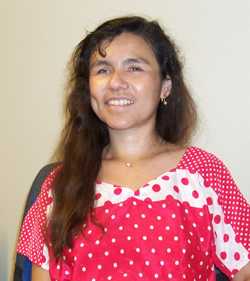
On January 28, educators and administrators throughout Kentucky gathered in their offices and at home computers to participate in their first endeavor into the "distance education" realm of professional development. Courtesy of APH, participants experienced a web cast presentation coordinated by Field Services Representative Maria Delgado.
During the one hour web cast, APH presenters Jane Thompson and Julia Myers familiarized teachers and administrators with ordering braille and large print textbooks using the ATIC department process. Presenters also shared effective searching tips of the Louis Database and File Repository, which may assist with the submission of orders, thus expediting the processing of textbook requests.
To play the entire Web cast using Windows Media Player, visit the following link: sites.aph.org/webcast/am2004/atic_louis.html
The next interactive presentation will cover basic searching tips, as well as frequently asked questions about the Louis Database and File Repository. We welcome your input as we develop the content, but hurry; the faster you send your thoughts and questions our way, the faster we can incorporate them into our May 12 on-line presentation which is scheduled from 1:00 until 2:00 p.m., E.S.T.
To participate, or to submit ideas for future topics, send an e-mail to Maria Delgado: mdelgado@aph.org
Custom Large Print Textbook Orders
Options at APH!
Now you have two options in large print textbooks from APH
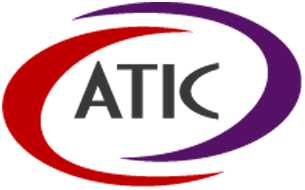
- Option 1 – The traditional APH enlarged textbooks, which have been around for many years, now offer full color.
- Option 2 – The new APH large print process, created by ATIC, which produces large print textbooks in standard textbook size. 18 point font minimum with full color!
With options can come confusion. To address your questions we have established a new email address to provide information on the status of orders, costs, time-line expectancies, etc. Simply address your questions to largeprint@aph.org and you will receive a response right away!
Please discard current APH large print textbook order forms and replace them with the new form available on the web at archive.aph.org/atic/atic_lp_form.html
Louis Survey

We are reviewing responses to the survey of Louis users and thank you for offering your good counsel. Based on your comments, we determined to offer the web cast presentation addressing questions about searching Louis (detailed above). Full results soon!
Reminder: Discontinuing the old Louis Interface March 31, 2005
As announced in January, we will discontinue the older interface to the Louis Database of Accessible Materials for People Who Are Blind or Visually Impaired on March 31, 2005.
We have found that the vast majority of Louis searchers use Internet Explorer® (IE). If you have chosen either Internet Explorer or Netscape Navigator as your web browser, please be certain to use Internet Explorer 6 or higher or Netscape Navigator® 7 or higher to ensure continued easy access to Louis. Louis will not work well with older versions of these browsers. If you are not certain which version of Internet Explorer you are using, choose the Help tab from the menu when you have Internet Explorer open. From the Help tab, choose About Internet Explorer which will open a screen that lists the installed version.
We have posted the links to upgrade to IE 6 and Netscape Navigator 7 below. Please note that both Netscape and Microsoft offer updates by two methods, via download from the web and by CD. The web downloads are free of charge for Netscape and Internet Explorer. We will only maintain access to the old Louis interface until March 31, 2005, so update your browser now if you still are using an old version of IE or Netscape.
- To upgrade to IE 6:
- Download via the web from here:
www.microsoft.com/windows/ie/downloads/critical/ie6sp1/default.mspx - Order a free CD (Microsoft charges $5 for shipping costs) over the phone or web:
www.microsoft.com/windows/ie/ordercd/ie6sp1.mspx
- Download via the web from here:
- To upgrade to Netscape Navigator 7.2 via web or CD (Netscape charges $14.95 shipping for the CD and includes a Guidebook):
channels.netscape.com/ns/browsers/download.jsp
APH Supports Challenging Students to Soar
or Burt Travels to the Cold Country
Burt Boyer traveled to Janesville, Wisconsin February 17 and 18 to participate in the Wisconsin Vision Teachers Conference. Burt was the keynote speaker and his topic addressed the theme of the conference: "Challenging Students to Soar." Burt based his presentation for the 65 attendees on the fact he was fortunate to have had wonderful people involved in his life who gave him the following traits leading to success and to soar: (DREAMS)–Determination, Responsibility, Expectations, Attitude, Motivation, and Self-Esteem. Burt also exhibited APH products during the conference.
National Family Conference
Stay tuned–detailed information about the conference, including registration, will appear in the April APH News. The planning committee will have its next meeting March 28 and 29, and final decisions will be made at that meeting. For more information visit archive.aph.org/advisory/nfc.html
Periodic Table Needs Evaluators
Tactile Graphics Project Leader Karen Poppe is seeking additional field evaluators for a large print/tactile (combined) Periodic Table of the Elements. Only three prototypes are still available. If you, or a VI teacher you know, is interested in field testing this product, please contact Karen as soon as possible at kpoppe@aph.org
Evaluators will be expected to use the prototype with students this school year and complete and return a product evaluation form by April 20, 2005.
Employment at APH
Two exciting career opportunities are currently available at APH.
- Field Services Representative
- Core Curriculum Project Leader
If you are considering a life change, please look over these exciting possibilities on our web site employment page: archive.aph.org/employment/index.html
Telesensory Corporation Supports Hall of Fame with Stone on Wall of Tribute
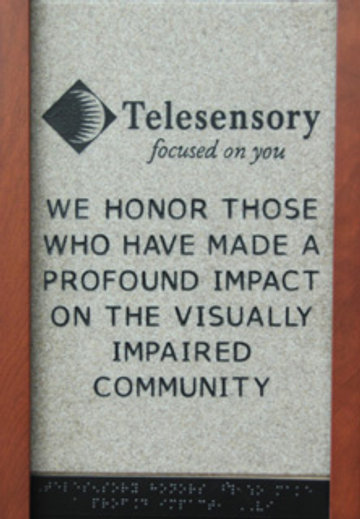
For three decades, Telesensory has been helping visually impaired and blind people achieve greater independence through innovative, technology-based products.
Recently, the company made a substantial commitment to assist the Hall of Fame for Leaders and Legends of the Blindness Field by donating the largest available engraved stone for the Wall of Tribute (12 x 8).
For additional information on Telesensory and the products they offer, visit:
http://www.telesensory.com
For additional information on placing a stone on the Wall of Tribute, visit:
archive.aph.org/hall_fame/wall_tribute.html or email Don Keefe, dkeefe@aph.org
The Council of the Hall of Fame thanks Telesensory for their generous support.
Guide Dogs for the Blind, Inc. Shows Support for the Hall of Fame

Guide Dogs for the Blind is a nonprofit, charitable organization with a mission to provide Guide Dogs and training in their use to visually impaired people throughout the United States and Canada.
Recently, the company made a substantial commitment to assist the Hall of Fame for Leaders and Legends of the Blindness Field by donating the largest available engraved stone for the Wall of Tribute (12 x 8).
For additional information on Guide Dogs for the Blind, Inc. visit www.guidedogs.com
The Council of the Hall of Fame thanks Guide Dogs for the Blind for their generous support.
The Hall of Fame for Leaders and Legends of the Blindness Field Still Accepting Nominations Through March 11!
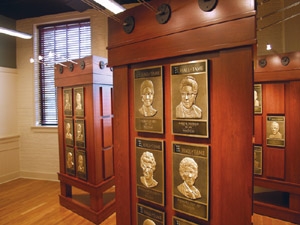
The Council of the Hall of Fame for Leaders and Legends of the Blindness Field is still accepting nominations for 2005 induction consideration. If you are interested in learning more about the process and/or submitting a qualified nominee, please visit the following link on the APH web site: archive.aph.org/hall_fame/nom_letter.html
Remember to submit supporting letters (up to three) separately if you electronically nominate.
For more information on the Hall of Fame for Leaders and Legends of the Blindness Field, visit the web location at: archive.aph.org/hall_fame/index.html
Remember, the process closes March 11.
New York Point Embossing Plates Added to Museum Collection
The APH Callahan Museum has acquired early embossing plates that were used by APH to produce raised-line maps with New York point labeling. The plates were found by staff in the APH Salvage Department and transferred to the museum by Ron Gadson, Maintenance Division Manager. Museum staff were pleased to learn that the plates are identical to early-embossed paper copies that have been on exhibit in the museum since its opening.
In its annual report of 1894, the American Printing House for the Blind listed New York Point maps among its available publications. Later reports indicate 1893 as the first edition of these maps, which included the Eastern and Western hemispheres, the continents, the United States, its regions, and individual states. The maps were sold separately, by the dozen, or in three bound volumes. They last appeared in the publication list of the 1926 APH annual report.
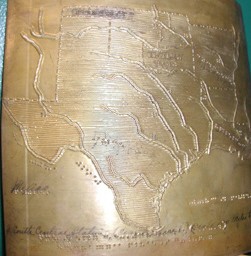
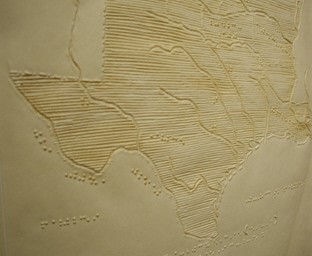
Abacus = Pencil and Paper When Calculating
By Terrie Terlau and Fred Gissoni

The mathematical abacus is a frame containing beads or balls on rods. The beads can be slid on wires for calculating or teaching arithmetic. When calculating with an abacus, the rods represent units, tens, hundreds, etc. Numbers are recorded and manipulated by moving beads toward the cross bar on their respective rods.
The abacus is a passive device. It is not a calculator or a slide rule. The abacus neither performs mathematical operations nor contains information that would enable an abacus user to achieve calculation results without a solid knowledge of mathematical concepts and relationships. Abacus users produce calculations as a result of their understanding of the behavior of numbers, not because of any inherent property of the abacus.
Both abacus and pencil-and-paper users must learn strategies for performing mathematical operations. The primary difference in the activity of abacus and pencil-and-paper users is that pencil-and-paper users apply and record steps in these operations by writing while abacus users apply and record these processes by moving abacus beads.
Persons who are blind or visually impaired and who have had appropriate abacus instruction can use this device to perform addition, subtraction, multiplication, and division, and can calculate square and cube roots. The abacus does not permit permanent storage of problem solutions because beads must be rearranged to perform subsequent problems. After each calculation performed with an abacus, answers can be recorded in a variety of formats including braille, large print, voice recording, word processing, or dictation into an electronic device. Therefore, in the classroom and during test taking, whenever a pencil and paper is allowed for working calculations, an abacus should be considered an equivalent substitution.
Dr. Alan J. Koenig
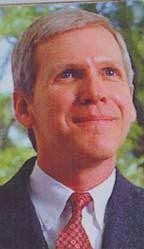
Alan J. Koenig, 50, died February 6 after a courageous battle with esophageal cancer.
Alan, professor of Special Education at Texas Tech University, enjoyed an international reputation as an expert in Braille, having written, co-written or edited 12 books and over 50 professional journal articles or book chapters on the topic.
Alan served in numerous leadership positions in both AER and CEC and was editor-in-chief of The Journal of Visual Impairment and Blindness from 2001 until 2004.
APH is particularly grateful to Dr. Koenig for his monumental contributions as a principal researcher to our ongoing ABC Braille Study. His work will continue to benefit countless students, families, and service providers.
APH Web Site Traffic Soars
The holiday season and the start of 2005 have brought with them an unprecedented number of visits to the APH web site. From September to November, the site received an average of 63,000 visits. In December that number hopped up to 71,000 and in January, vaulted to 86,000. February visits maintained these high numbers: 88,000. This compares to monthly visitor figures in the high 30s to low 40s (thousands) at the beginning of 2003, and high 40s to low 50s at the beginning of 2004.
Popular places to visit on the APH web site are: the Louis Accessible Materials Database; Products; the APH CVI sub-site; APH Software and Technology; the Hall of Fame; and the APH News.
APH Welcomes New Trustees
Marty R. McKenzie at the South Carolina Department of Education, replacing Marcia Kelly
Ellen M. Yung-Fatah at the District of Columbia Department of Human Resources, replacing Joan Christopher
Richard Pope at the Texas Education Agency, replacing Martha Murrell

APH Travel Calendar
March
March 3-6, 2005
CTEVH 46th Annual Conference;
Burlingame, CA
March 5, 2005
Planning the Annual Conference of Mid American Conf. Of Rehab. Teachers & Association of Southeast Rehabilitation;
St Louis, MO
March 10, 2005
AFB Solutions Forum Meeting – What is NIMAS?;
Boston, Massachusetts
March 10-12, 2005
KAER;
Owensboro, KY
March 10-13, 2005
ASA-NCOA Joint Conference;
Philadelphia, PA
March 10-13, 2005
Jo Taylor Leadership Institute;
Boston, MA
March 14-19, 2005
CSUN Conference;
Los Angeles, CA
March 20-23, 2005
International Preschool Seminar;
Watertown, MA
April
April 1-2, 2005 – Rescheduled from January, 2005
CVI NIP Event: What You See Is Not Always What You Get;
Portland, OR
April 1-2, 2005
DAISY Consortium Yearly General Meeting;
Camden Town, London
Two for One – Products & Parts Together
Now the Information You Need In One Catalog
The Products Catalog 2005-2006 is currently in production and will be available in time for end-of-school ordering. For the first time, APH is including our catalog of replacement parts at the end of the Products Catalog. This should make it easier to find the parts you need, more convenient to have ordering information for all your purchases in one place, and allow you to refer back to product listings and descriptions.
Other Products Catalog features include:
- A number of new items, such as ‘K’ Sonar, an electronic mobility aid, and Talking Word Puzzles™, an accessible word puzzle software
- Several items now offered in Spanish, including the Colorino and ColorTest II, talking color analyzers
- Additions to the Homegrown Video Series, instructional videos that recommend tips and ideas for using various APH products
Watch for your catalog – Coming Soon!
If you would like to be added to our mailing list to receive our print or disc edition catalog, please email catalogs@aph.org or call 1-800-223-1839. APH catalogs are also available in accessible electronic editions at archive.aph.org, click "Products."
Did You Know We Offer…Blank Cassette Tapes?
APH offers blank 90-minute cassette tapes in packages of 5 tapes or 25 tapes for your recording convenience. Now there is no need for that last-minute run to the store before class — and because of the multi-pack packaging, there is enough recording time available for even your longest lecturer.
Store recorded cassettes in APH’s Cassette Circulation/Storage Containers. These plastic containers come in two varieties, one that holds four cassettes and one for six cassettes. They close securely, are embossed "Free Matter for the Blind or Handicapped," and have a slot for a mailing label so they can be mailed without additional packaging.
APH offers a number of accessories to increase recording efficiency or listening enjoyment. Check them out on our web site at archive.aph.org/products/audioacc.html or request a catalog by calling 1-800-223-1839 or emailing catalogs@aph.org
To Order:
Blank C-90 Cassette Tapes (5 tapes): 1-08561-00 — $6.50
Blank C-90 Cassette Tapes (25 tapes): 1-08560-01 — $22.00
NOTE: Cassette tapes are not available on Federal Quota.
Cassette Circulation/Storage Containers (4 cassette capacity):
1-02620-00 — $1.50 each
Cassette Circulation/Storage Containers (6 cassette capacity):
1-02630-00 — $2.00 each
APH News Credits
President:
Dr. Tuck Tinsley
ttinsley@aph.org
Designer:
Malcolm Turner, APH Web Site Coordinator
webmaster@aph.org
Thanks to the following APH staff:
- Janie Blome, Director, Field Services
- Scott Blome, Director, Communications
- Cindy Amback, Assistant, Products and Services
- Burt Boyer, Early Childhood Project Leader, Research
- Maria Delgado, Field Services Representative
- Fred Gissoni, Representative, Customer Service
- Becki Moody, Communications Support Specialist
- Julia Myers, Director, Resource Services
- Artina Paris-Jones, Assistant, Field services
- Terrie Terlau, Adult Life Project Leader, Research
- Jane Thompson, Director, ATIC
- Malcolm Turner, Web Site Coordinator, Communications
- Anne Rich, Associate, Callahan Museum
- Debbie Willis, Director, Accessible Tests
Editor:
Bob Brasher, Vice President, Advisory Services and Research
bbrasher@aph.org
For additional recent APH News, click the following:
February Issue – archive.aph.org/advisory/2005adv02.html
January Issue – archive.aph.org/advisory/2005adv01.html
December Issue – archive.aph.org/advisory/2004adv12.html
Archive of all previous issues – archive.aph.org/advisory/advarch.html
Please share this web link or any items that appear in this publication with anyone who might benefit.
Thank you.
Subscribe to the APH News!
Get convenient email reminders every month when a new issue of the APH News is released.
It’s Easy!
- Create an email to aphinfo-request@iglou.com
- Leave the subject blank
- Type the word ‘subscribe’ (without any quote marks) in the body of the message
- Send it.

